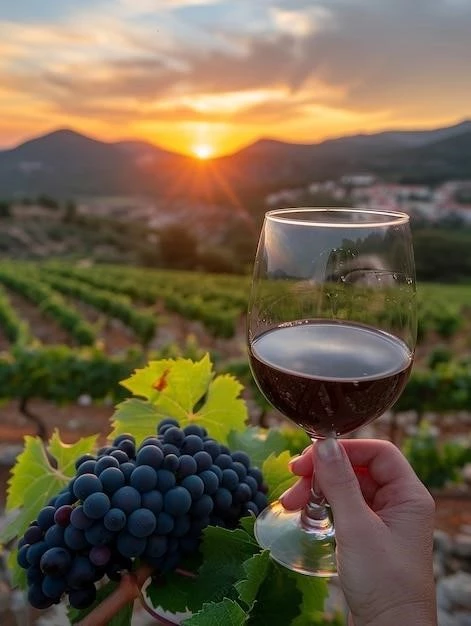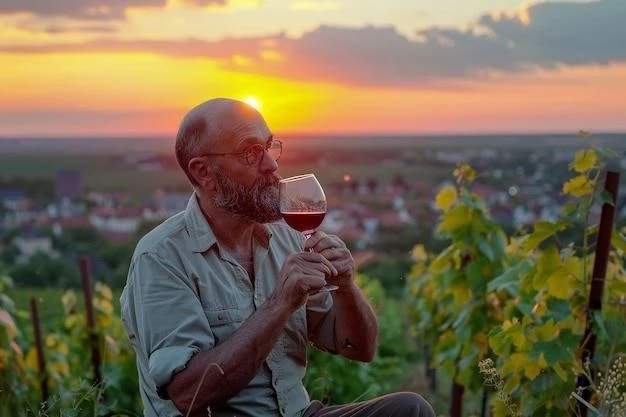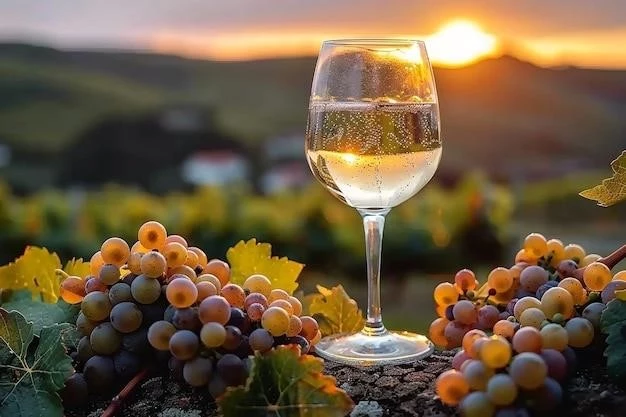Emerging Wine Trends for 2024
The global wine landscape is ever-evolving, with consumer preferences shaping new trends. 2024 promises an exciting year for wine enthusiasts, marked by a growing interest in sustainable and low-alcohol options. The rise of “better for you” wines, with lower calorie and carb counts, appeals to health-conscious drinkers. Simultaneously, the low and no-alcohol wine sector is experiencing remarkable growth, driven by evolving lifestyles and a focus on mindful consumption. These trends highlight a shift towards lighter, more sustainable choices, reflecting a global desire for balanced and mindful indulgence.

The Rise of Wine Tourism
Wine tourism is experiencing an unprecedented surge in popularity, evolving from a niche interest to a mainstream travel trend. Discerning travelers are increasingly drawn to immersive experiences that blend cultural exploration with the art of winemaking. No longer content with merely tasting wines, enthusiasts seek authentic connections with the land, the people, and the heritage behind each bottle. This shift in perspective has fueled the rise of sophisticated wine tourism, catering to those who appreciate the finer points of viticulture and crave enriching travel experiences.
Several factors contribute to this burgeoning trend. The increasing sophistication of the modern palate, fueled by global culinary experiences and readily available information, has fostered a deeper appreciation for wine. Travelers are eager to go beyond the ordinary, seeking unique and memorable adventures centered around shared passions. Wine tourism perfectly satisfies this desire, offering a blend of education, sensory delight, and cultural immersion. Moreover, the growing focus on sustainable and responsible travel aligns seamlessly with the ethos of many wineries, particularly those embracing organic and biodynamic practices.
The allure of wine tourism extends beyond the cellar door, encompassing a range of activities that cater to diverse interests. Guided vineyard tours provide insights into the intricate processes of grape growing and harvesting, while wine tasting sessions offer opportunities to discern subtle flavor profiles and regional nuances. Many wineries have elevated the tasting experience, pairing their finest vintages with gourmet cuisine crafted from locally sourced ingredients. Beyond the vineyard, wine regions boast charming villages, historic landmarks, and breathtaking landscapes, offering ample opportunities for exploration and relaxation.
This holistic approach to wine tourism transforms a simple trip into an immersive journey of discovery. Travelers return home not only with newfound knowledge and a refined palate but also with cherished memories of shared experiences and authentic encounters. As the world reopens to travel, expect wine tourism to continue its upward trajectory, attracting a new generation of explorers eager to savor the world’s finest wines at their source.

Top Wine Regions for Foodies
For culinary enthusiasts seeking a symphony of flavors, certain wine regions stand out as veritable epicenters of gastronomy. These destinations seamlessly blend exceptional wines with world-class cuisine, creating unforgettable experiences that tantalize the palate and linger in the memory. The synergy between vineyard and table is deeply ingrained in these regions, where time-honored traditions and a passion for fresh, locally sourced ingredients elevate every meal to an art form.
One such gem is Piedmont, Italy, renowned for its rich culinary heritage and esteemed wines like Barolo and Barbaresco. Here, rolling hills blanketed in meticulously tended vines yield robust Nebbiolo grapes, the foundation for these full-bodied reds. Truffles, the region’s prized culinary treasure, add an earthy opulence to dishes like tajarin, delicate hand-cut egg noodles, and risotto al Barolo, a creamy rice dish infused with the region’s signature wine. Piedmont’s rustic charm and dedication to slow food principles create an immersive experience that celebrates the region’s terroir in every bite.
Across the border in France, Alsace beckons with its captivating blend of French and German influences, reflected in both its cuisine and wines. Picture-perfect villages nestled amidst rolling vineyards evoke a fairytale ambiance, while the region’s aromatic white wines, like Riesling and Gewürztraminer, perfectly complement the hearty flavors of Alsatian cuisine. Indulge in choucroute garnie, a savory dish of sauerkraut, sausages, and potatoes, or savor the delicate flavors of tarte flambée, a thin-crust pizza topped with crème fraîche, onions, and bacon.
Venturing to the New World, California’s Napa Valley offers a more contemporary take on wine country cuisine. Here, Michelin-starred restaurants showcase innovative dishes that highlight the region’s bounty of fresh produce, seafood, and, of course, exceptional wines. Cabernet Sauvignon reigns supreme in Napa, its bold flavors a perfect match for grilled meats and aged cheeses. For a truly decadent experience, indulge in a multi-course tasting menu paired with a selection of Napa’s finest vintages.
These regions represent just a glimpse into the world of wine and food pairings, where each destination offers a unique tapestry of flavors and experiences. Whether seeking rustic charm, refined elegance, or innovative cuisine, these wine regions promise to delight the most discerning foodie.

Sustainable Wine Travel Experiences
As sustainability takes center stage in the global consciousness, a new breed of discerning traveler seeks to minimize their environmental impact without compromising on enriching experiences. Sustainable wine tourism caters to this growing demand, offering opportunities to engage with wineries and regions that prioritize ecological balance, social responsibility, and economic viability. By choosing sustainable wine travel experiences, enthusiasts can indulge their passion for wine while contributing to the preservation of these precious landscapes for generations to come.
Organic and biodynamic viticulture lie at the heart of sustainable winemaking, employing practices that promote soil health, biodiversity, and water conservation. These methods eschew synthetic pesticides, herbicides, and fertilizers, relying instead on natural solutions to nurture the vines and produce high-quality grapes. Visiting wineries certified by organizations like Ecocert or Demeter ensures that your choices align with rigorous environmental standards. Many sustainable wineries go beyond the vineyard, implementing energy-efficient practices, reducing waste, and sourcing materials locally.
Sustainable wine travel extends beyond the winery gates, encompassing a holistic approach to experiencing a region. Opt for eco-friendly accommodations, such as charming guesthouses powered by renewable energy or boutique hotels committed to reducing their carbon footprint. Explore the surrounding countryside on foot, by bicycle, or via electric vehicles, immersing yourself in the natural beauty while minimizing your impact. Seek out farm-to-table restaurants that champion local producers and prioritize seasonal ingredients, reducing transportation emissions and supporting the regional economy.
Engaging with the local community is another essential aspect of sustainable wine tourism. Seek out wineries that prioritize fair labor practices and contribute to the well-being of their employees and the surrounding community. Participate in educational tours and tastings that provide insights into the region’s unique terroir, cultural heritage, and commitment to sustainability. By supporting businesses that prioritize ethical and responsible practices, travelers can contribute to the long-term health of these wine regions.
Sustainable wine tourism is not simply a trend but a transformative way to experience the world’s finest wine regions while preserving their beauty and integrity for generations to come. By making conscious choices and supporting businesses that share these values, travelers can indulge their passion for wine while contributing to a more sustainable and equitable future.

Wine Regions for Budget Travelers
Exploring the world’s renowned wine regions needn’t require a connoisseur’s budget. Savvy travelers can uncover hidden gems and savor exceptional wines without breaking the bank by venturing beyond the well-trodden paths of established destinations. Numerous emerging wine regions offer an authentic taste of local culture and viticulture at a fraction of the cost, proving that memorable wine experiences are accessible to all.
Portugal’s Douro Valley, a UNESCO World Heritage site, captivates with its dramatic terraced vineyards cascading down to the Douro River. While renowned for producing Port, the region also crafts exceptional dry red wines at remarkably affordable prices. Charming guesthouses and family-run wineries offer warm hospitality and breathtaking views without the premium price tag of other European destinations. Explore the valley’s winding roads by car or embark on a scenic river cruise to soak in the region’s beauty and savor its affordable delights.
Across the Atlantic, Argentina’s Mendoza region beckons with its majestic Andean backdrop and burgeoning wine scene. Malbec, Argentina’s flagship grape, thrives in this high-altitude terroir, producing rich, full-bodied wines that overdeliver on value. Mendoza offers a range of accommodation options, from budget-friendly hostels to charming boutique hotels, catering to a variety of travelers. Sample empanadas and other local delicacies at affordable prices, and explore the region’s wineries, many of which offer tastings and tours at a fraction of the cost of their European counterparts.
Closer to home, the Finger Lakes region of New York State provides a charming and affordable escape for wine enthusiasts. This picturesque region boasts a cool climate ideal for producing crisp Rieslings, aromatic Gewürztraminers, and elegant Pinot Noirs. Family-owned wineries dot the landscape, offering tastings and tours in a relaxed and welcoming atmosphere. Accommodation options range from cozy bed and breakfasts to lakeside cottages, providing scenic views and a tranquil escape without the high prices of other American wine regions.
These budget-friendly destinations demonstrate that exceptional wine experiences are accessible to all. By venturing off the beaten path and embracing the charm of emerging wine regions, travelers can indulge in their passion for wine without sacrificing value or authenticity. Remember to research local transportation options, consider visiting during the shoulder seasons for lower prices, and embrace the opportunity to discover hidden gems and savor the unique character of each region.

Planning Your Wine Region Adventure
Embarking on a wine region adventure promises a symphony of sensory delights, cultural immersion, and unforgettable memories. However, meticulous planning is essential to ensure a seamless and enriching experience. From selecting the ideal destination to navigating the nuances of winery visits, a well-crafted itinerary transforms a simple trip into a curated journey of discovery.
Begin by defining your priorities. Are you drawn to a particular wine style, such as bold Cabernet Sauvignon or crisp Sauvignon Blanc? Do you envision yourself exploring rolling vineyards by bicycle or indulging in gourmet meals at Michelin-starred restaurants? Once you’ve identified your passions, research regions renowned for those experiences. Consider factors like budget, travel time, and preferred activities to narrow down your choices.
Next, delve into the specifics of your chosen destination. Explore the region’s wine routes and identify wineries that pique your interest. Many wineries require advance reservations for tastings and tours, especially during peak season. Contact wineries directly or utilize online booking platforms to secure your preferred dates and times. Familiarize yourself with local transportation options, considering car rentals, private drivers, or public transportation depending on your itinerary and budget.
Accommodation options within wine regions are as diverse as the wines themselves, ranging from charming guesthouses nestled amidst vineyards to luxurious hotels offering spa treatments and gourmet dining. Research various options and book well in advance, especially if traveling during peak season. Consider factors like proximity to wineries, amenities, and overall ambiance to find the perfect base for your adventures.
Beyond winery visits, explore the cultural and culinary treasures of your chosen region. Discover charming villages, historic landmarks, and scenic hiking trails to immerse yourself in the local way of life. Indulge in regional cuisine at family-run restaurants or Michelin-starred establishments, savoring the freshest ingredients and traditional recipes. Engage with locals, attend wine festivals, or participate in cooking classes to deepen your understanding and appreciation for the region’s unique heritage.
Finally, pack appropriately for all weather conditions, remembering comfortable footwear for vineyard walks and a light jacket for cool evenings. Carry a reusable water bottle to stay hydrated and a notebook to jot down tasting notes and memorable moments. Embrace the spirit of adventure, engage with the local culture, and savor every sip of your wine region experience.










